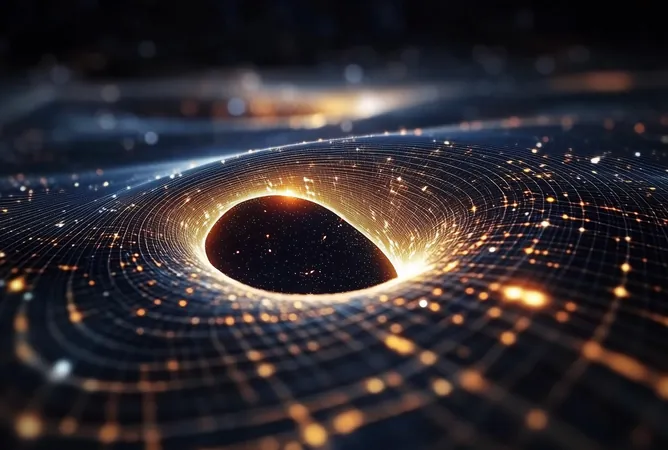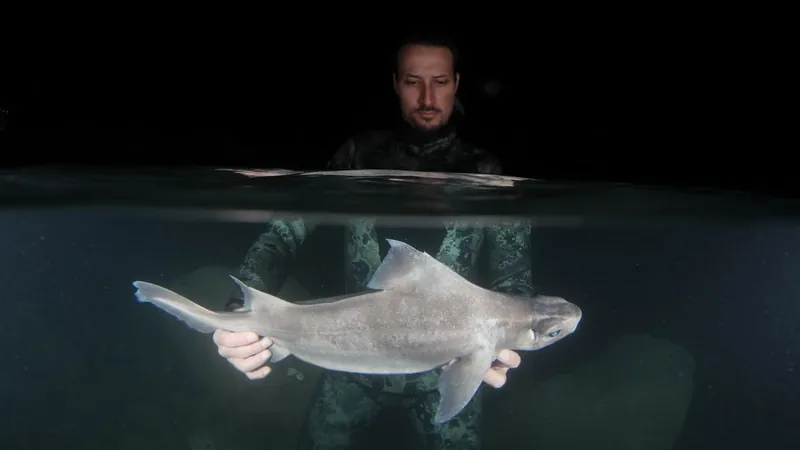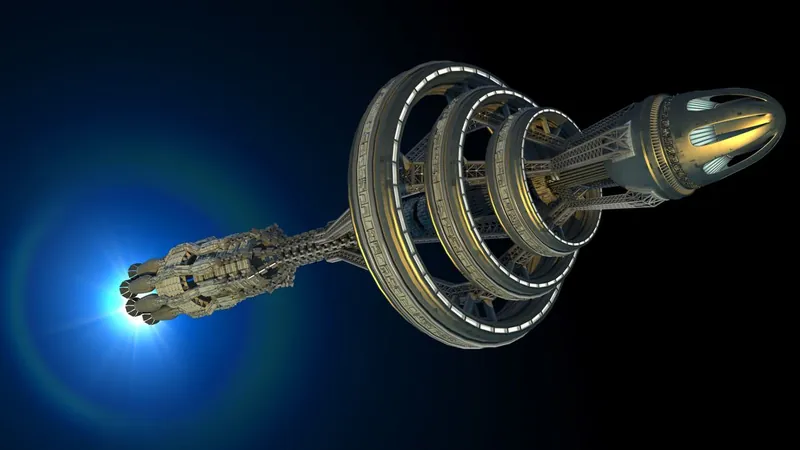
Unraveling the Secrets of Gravitons: How Quantum Sensing Could Bridge Quantum Physics and Gravity
2024-11-03
Author: Noah
In the quest to unravel the mysteries of the universe, researchers are making significant strides in the detection of elusive particles known as gravitons—hypothetical carriers of gravitational force. This exciting pursuit aims to fuse the principles of quantum mechanics with Einstein’s theory of relativity, potentially transforming our understanding of fundamental physics.
The Cutting-Edge of Quantum Sensing
At the forefront of this exploration are advanced quantum sensing technologies, like those utilized in the Laser Interferometer Gravitational-Wave Observatory (LIGO). These sophisticated instruments detect gravitational waves—ripples in spacetime produced by colossal cosmic events, such as colliding black holes. They achieve this remarkable feat by employing quantum noise reduction methods, notably through a technique called 'squeezing' that enhances measurement precision.
Interestingly, this same technology could potentially aid in the detection of gravitons by offering a more refined approach to measuring gravitational disturbances, even within controlled lab environments. This raises tantalizing hopes that scientists may soon bridge the gap between quantum mechanics and gravitational theory, leading to groundbreaking insights into phenomena such as black holes and the origins of the universe.
The Challenge of Unification
Gravity and quantum mechanics have long existed in separate realms—like oil and water—creating a persistent challenge for physicists. Einstein’s general theory of relativity, formulated in 1915, conceptualizes gravity as the curvature of spacetime. Conversely, quantum mechanics posits that forces are mediated through particles. This dichotomy begs the question: can the concept of gravitons unify these principles?
Gravitons, if they exist, would represent the quantization of gravity, akin to how photons describe light's quantum nature. Interestingly, renowned physicist Freeman Dyson once suggested that even an Earth-sized graviton detector orbiting the sun might only collect a handful of gravitons over billions of years. Yet, advancements in quantum technology have invigorated hopes that with the right experimental setups, researchers may soon be able to detect gravitational signatures associated with gravitons in laboratory conditions.
LIGO and Quantum Noise
LIGO has already made history by successfully detecting gravitational waves, allowing scientists to witness cosmic events in a way previously thought impossible. However, LIGO's sensitivity is inherently limited due to quantum noise—random fluctuations that arise from the fundamental nature of empty space. By employing the squeezing technique, researchers can mitigate some of this noise, paving the way for even more precise measurements.
Theoretically, a carefully cooled quantum resonator could help in detecting single gravitons. As gravitational waves interact with this resonator, they could produce measurable disturbances, thereby providing a potential pathway to confirm the quantum nature of gravity.
A Pragmatic Approach
A recent study in Nature Communications proposes an innovative framework for detecting single gravitons. The approach involves a quantum acoustic resonator, a device capable of sensing minute shifts in energy states. By cooling it to near absolute zero to reduce interference and using gravitational waves to stimulate it, researchers aim to identify disturbances specifically caused by graviton interactions.
However, the journey is not without significant hurdles. The challenge of maintaining such low temperatures, managing thermal noise, and achieving non-destructive measurements of energy levels poses both technical and philosophical questions. A successful detection of a graviton would only hint at gravity's quantized nature, necessitating further experiments to solidify our understanding.
Paving the Path Forward
Beyond the pursuit of graviton detection, these advancements in quantum sensing technologies hold the promise for a broader understanding of the universe. Techniques developed for graviton detection could uncover previously invisible gravitational waves, opening doors to new discoveries about cosmic phenomena, including the enigmatic black holes and the origins of the Big Bang.
As physicists cautiously navigate these complex waters, the line between quantum mechanics and gravitational theory continues to blur. With perseverance and innovation, the dream of unifying these two fundamental aspects of our universe may no longer be just a figment of the imagination but a reality within our grasp.









 Brasil (PT)
Brasil (PT)
 Canada (EN)
Canada (EN)
 Chile (ES)
Chile (ES)
 España (ES)
España (ES)
 France (FR)
France (FR)
 Hong Kong (EN)
Hong Kong (EN)
 Italia (IT)
Italia (IT)
 日本 (JA)
日本 (JA)
 Magyarország (HU)
Magyarország (HU)
 Norge (NO)
Norge (NO)
 Polska (PL)
Polska (PL)
 Schweiz (DE)
Schweiz (DE)
 Singapore (EN)
Singapore (EN)
 Sverige (SV)
Sverige (SV)
 Suomi (FI)
Suomi (FI)
 Türkiye (TR)
Türkiye (TR)